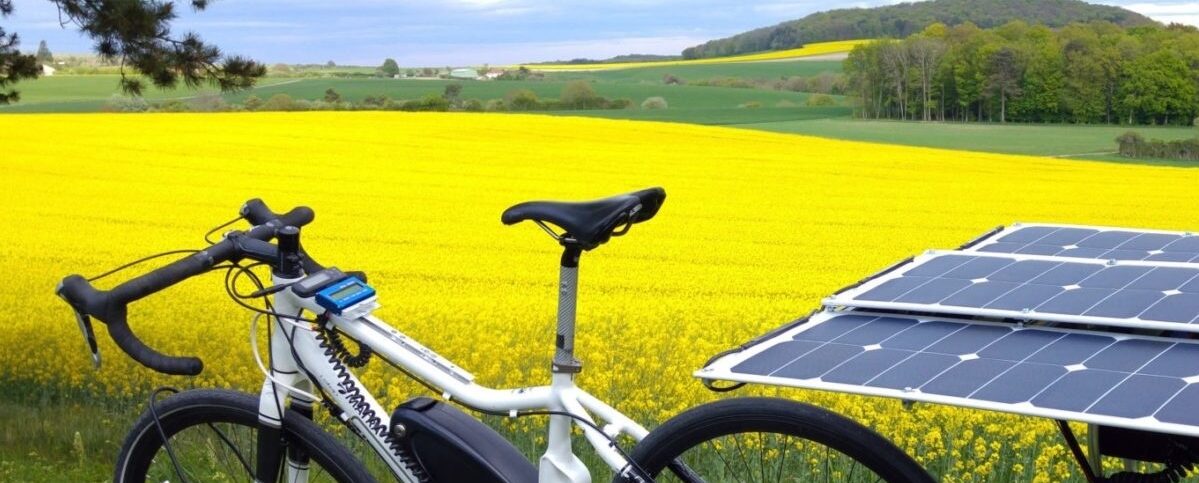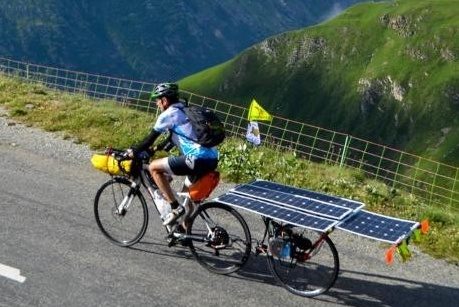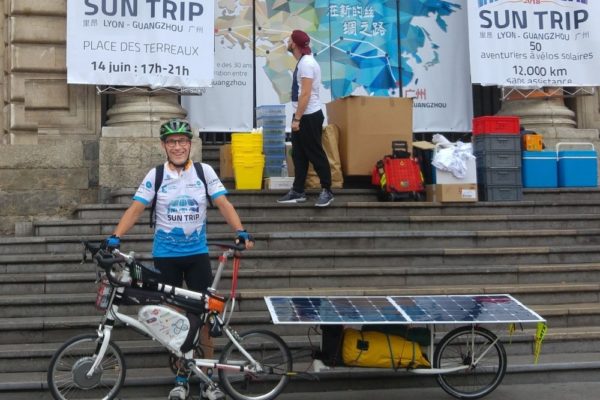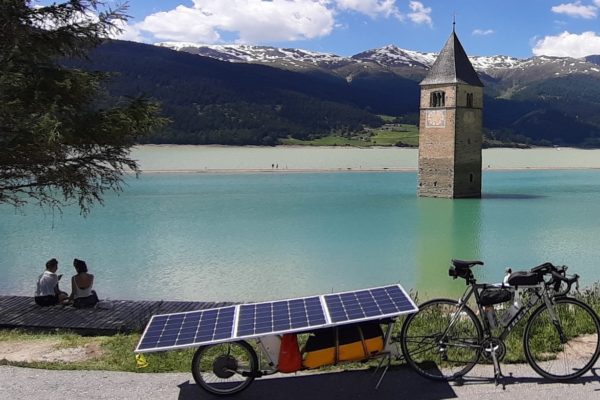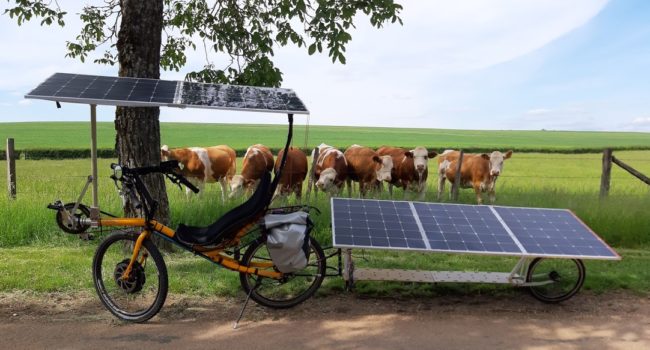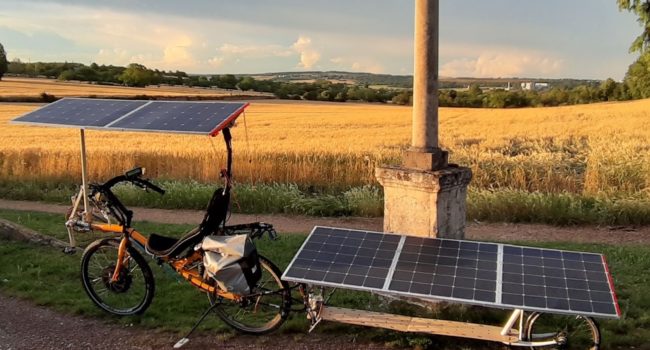Installing signs on a bicycle raises many problems. The solutions are many and varied, as we can see during the various Sun Trips.
The designer is led to make choices, according to his priorities, his taste and his budget.
Most often, priority is given to a type of bike (classic, recumbent, cargo bike, trike …) the solar equipment will then have to adapt to it.
But sometimes, other constraints are chosen as priorities and guide the design:
– have a large solar surface, to capture a maximum of energy,
– have a large capacity battery, to store more energy in poor weather,
– design a very light vehicle to easily climb the mountains,
– design a very solid vehicle, to avoid breakage during long journeys,
– have a foldable vehicle easily for transport.
We dream of the ideal vehicle, light, solid, powerful, with a long range. Very quickly, you realize that all these wishes conflict with each other. Increasing the surface area of the panels and the supporting structure contributes to weighing down the vehicle. Likewise, with increasing battery capacity. Lightening the vehicle as much as possible can make it too fragile to face the road and vibrations.
Since 2017, I wanted to have a vehicle that can be taken by train: I opted for a classic bike and a folding single-wheel trailer. In 2018, I tested a folding bike with a foldable trailer to be able to take the vehicle on international buses. The maximum area of panels that I managed to install on a trailer was 1.5m², corresponding to a power of 300Wp.
I have not explored the possibility of installing panels on the bike, on the roof, as did Daniel Jeni during the Sun Trip 2018. Maybe I would try this idea one day?
Preparation of the Sun Trip 2020 Lyon-Canton
I wanted to have the maximum authorized solar surface, 2.5m². For this I first considered using a cargo bike and then a tandem.
Finally, it was thanks to Guillaume Devot of Déclic Eco that the idea of using a recumbent bike came to life. Installing 1m² of panels on the bike completes the 1.5m² of trailer panels.
But a concern remained: would this configuration be easy to drive on the road, even in the case of a strong side wind? Experience has shown me that it is.
It remains for me to test the efficiency and solidity of the supporting structure of the panels on the bike.
The trailer structure has proven itself in 2018 and 2019 over 6000 km. It’s reassuring because I could observe that the vibrations and shocks of the road, over thousands of kilometers, really test the load-bearing structure of the panels.
For learn more about choices adopted by other participants in the various Sun Trips …
Views: 472
